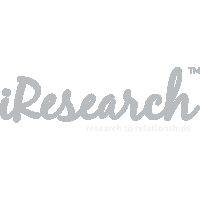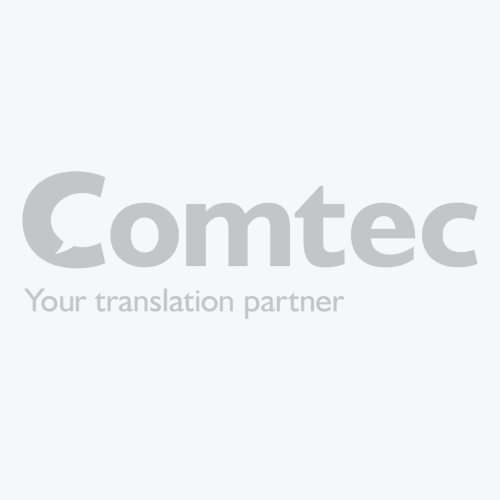Now more than ever, to stay in business, brands must humanize themselves to evolve from being just the products and services they offer. Target audiences expect more, and employees and candidates want to join a culture where they can feel recognized and appreciated for their efforts both in the workplace and in their communities.
Understanding that all audiences feel first and think second is the key to developing an emotional connection as you reach for greater brand attachment. It’s not enough to sell or educate anymore. Brands must inspire and connect—and that’s where employee storytelling comes in.
Employee Stories Are Powerful
Employee stories are powerful when they are packed with purpose, relevance and emotion. Why? In addition to recent shifts in the way consumers develop brand loyalty and attachment, similar shifts have also occurred in the workplace and in the mindsets of the millennial workforce. According to Esther Perel, we currently live in the “identity economy.” Contrary to popular belief, work is actually an integral part of millennial and younger generations’ identities, whereas previous generations were more likely to view religion and local communities as keys to their identity. With work playing such an important role in shaping our identities, people are now more likely to want to join cultures, not companies.
At Pace, we help brands find authentic employee experiences and bring them to life to drive increases in measured engagement, sentiment, retention and brand health. We leverage the voices of employees to increase retention and boost recruitment tactics. Our content and UX design actively engage more than 3 million employees and an estimated 9 million+ prospective candidates every year. And here’s how.
5 Critical Lenses to Build Your Storytelling Program
Before you begin an employee storytelling program, a framework should be established to ensure your content is effective and activated in the right content type and channel. Successful employee storytelling programs also involve more than just creating impactful stories. These stories work best when everything is interconnected to fuel growth for HR, marketing, brand, communications and more.
Here’s the employee storytelling program framework we utilize at Pace:

- Employer Brand—Attracting top talent is no easy task. Untold amounts of money are spent each year on recruitment efforts, yet so many brands forget that the very people they employ may have the best stories to ultimately attract new talent. The key is to get to the raw, organic stories that will make highly sought-after talent come knocking.
- Employee Storytelling—The more employees see and hear their voices and feel appreciated through public storytelling of their successes and contributions, the more they want to engage and share—therefore lifting employee and brand sentiment.
- Employee Communications—The nature, frequency, and prevalence of essential and functional communications served to an employee serves many purposes. The key question to ask when developing a piece of content here: What about employee communications can best contribute positive public perceptions? Most likely, it’s how much your employees feel considered, informed and connected.
How you communicate information can influence everything, including retention, Glassdoor ratings and employees being brand ambassadors with friends and family. Content should be a blend of what I refer to as fashion and function, weaving in emotion where you can to inspire, educate and empower employees.
- Global Culture and Diversity—True dedication to company culture—and how that intersects with values on diversity—becomes a brand lifeline externally. Do consumers see a reflection of themselves in your brand and the people who work for you? How can you highlight and reinforce the behavior and good outcomes you want from your brand and your employees?
The narrative here matters, way beyond lip service–so make sure you execute a “show” versus “tell” approach. And remember, today’s mass market is multicultural. A brand’s content mix should reflect this as well.
- User Insights and Experience—Every story and every employee has a place in the equation. How you prioritize internal and external publication is one step; the other is how you use the eyes and ears of a creative technologist to bring these experiences to life in digital and print formats for the intended audience. Let the numbers guide you to allow data, rather than opinion, to drive your program.
5 Tips for Getting Started
As you begin, you may experience constraints around budget, time, technology and alignment. Here are five tips to help you overcome these hurdles so you can get started on your own employee storytelling program:
- Start Small—Quality over quantity is one of our golden rules. You must create reasonable and timely goals that match up with both your capabilities and capacity. Also, don’t shy away from repeatable ideas, which can make it simpler to plan, execute and publish the right content at the right time.
- Be Tech Ready—Make sure you have tech that will allow for efficiencies to monitor content workflows and easily disseminate the right content to the right channels.
- Get Everyone On Board—Communicate to gain alignment with leaders across the organization. They should understand the why and must be advocates across the business for support and story mining.
- Authenticity Is King—When you’re developing employee stories, remember to focus on authenticity, giving your employees the opportunity to amplify their unique voices.
- One Size Does Not Fit All—Distribute created content to the right channels in the formats that work best for audiences engaging there.
And if you have any questions along the way, I’m happy to connect. I love when brands do this and do it right and am privileged to help bring programs big and small to life.
By Nicole Martin @StrategySavvy | LinkedIn
I am the Vice President of Strategy & Marketing Solutions at Pace Communications. I work in partnership with Pace’s entire portfolio to create brand, digital and content marketing strategies that maximize online exposure through the creation of performance-driven content.
Pace is a full-service global marketing agency that delivers results by continually creating better customer and employee experiences for its clients. Fueled by the power of “why,” Pace delivers amazing creative using a unique combination of audience-first, data-driven thinking, smart strategies and technology. Check out their CMA member page.







